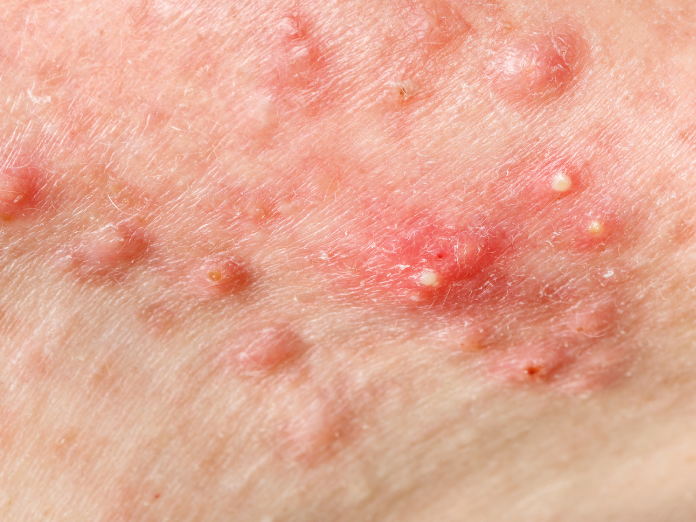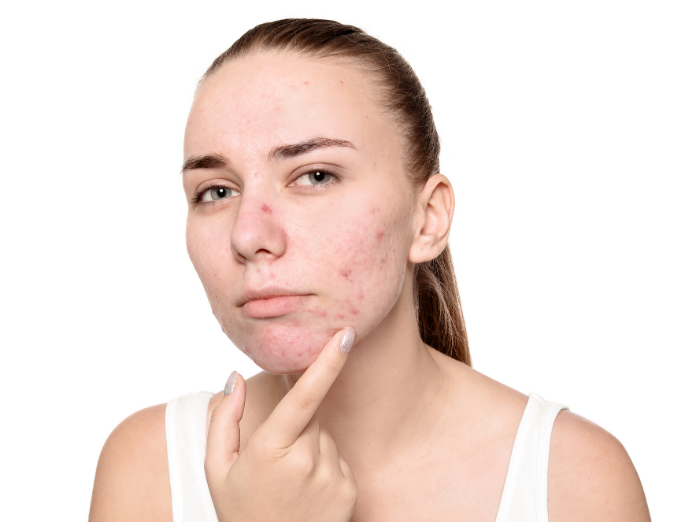Over the horizon, there’s a new player breaking into the acne market. Clascoterone, 1% for acne shows promise as a topical treatment.
But does it work?
What does the research say about clascoterone, how does it compare to other acne medications, and what are the side effects?
What is clascoterone?
Clascoterone is a new topical cream treatment for acne vulgaris. Topical treatments are applied directly to the skin, as opposed to being taken in pill form or other methods.
Clascoterone cream is rubbed directly on the breakout area and can reportedly clear up acne lesion counts in as little as twelve weeks.
Before you use it, you should first wash your face, ideally with a cleanser that’s suitable for hormonal acne.
Cassiopea Inc is currently developing this treatment. While clascoterone is the generic drug name, its tentative brand name for the public will be Winlevi for acne treatment.
The drug is also currently in development under the name Breezula for hair loss, treating androgenetic alopecia in males and females.
Androgen imbalances can trigger balding in both men and women. As an antiandrogen product, clascoterone works for more than just topical acne treatment.
How does clascoterone work for acne?
Cascoterone works for acne by decreasing sebum production. This is possible because it is a topical androgen receptor inhibitor, which means that it stops the glands at the site of application from receiving androgens. This causes glands to produce less oil at the application site.
In scientific terms, clascoterone inhibits dihydrotestosterone (DHT) from binding to the sebaceous gland’s androgen receptors, or sebocytes. This androgen receptor antagonist also seems to reduce inflammatory cytokine production, reducing inflammation associated with acne.
One study found that clascoterone had up to a 20% success rate after 12 weeks. The results showed a significant reduction in both noninflammatory lesions, like whiteheads and blackheads, and inflammatory lesions, like pustules, papules, and pseudocysts.
This product is made for people suffering with moderate to severe acne.
The Investigator’s Global Assessment (IGA) for acne classifies severe acne as half or more of the face suffering from larger acne eruptions like comedones, pustules, and cysts.
Clascoterone vs. Other Acne Medications
Clascoterone is different from many other hormonal acne treatments because it’s applied topically, as opposed to in a pill form.
It has similar effects to spironolactone, another androgen antagonist, but a recent study found several differences:
- Spironolactone only works for female patients, while clascoterone is suitable for both males and females.
- Clascoterone is applied topically, while spironolactone is taken in a pill form (although some topical formulations can be compounded, or made by a compounding specialty pharmacy).
- Spironolactone inhibits androgen throughout the body, due to being taken orally, while clascoterone is able to target androgen receptors in specific areas.
Beyond spironolactone, other comparable medications would be topically applied gels, creams, and serums that contain standard acne treatment items: salicylic acid, benzoyl peroxide, or even tea tree oil.
The major difference between these and clascoterone is that alternative treatments target the surface of the skin, aiming to exfoliate, reduce bacteria, or dry out oils. However, the goal of clascoterone is to block androgen receptors, stopping oil before it starts.
Side Effects
So, what does the research tell us about the safety of clascoterone cream?
In a 9-month study of long-term adverse events, the possible side effects were mostly mild and did not seem to interfere with treatment success.
The study found no serious complications, but mild skin reactions did sometimes show up on the application site or on the vehicle arm that applied the cream.
Another study had similar results, with few subjects experiencing very minor reactions that resolved on their own.
Is clascoterone right for you?
After all this promising information, you’re likely wondering if clascoterone is right for you.
While it seems like an exciting new product full of potential, keep in mind that this novel topical androgen receptor inhibitor is brand new. It’s not even approved for sale yet — so far, only clinical trial participants have been able to try it out.
This means that there are simply some things about it that we don’t know yet, and your dermatologist won’t have long-term experience with recommending it.
This isn’t necessarily a point against clascoterone, just a consideration to discuss with your dermatologist.
When it comes to the topical treatment of acne vulgaris, a treatment regimen usually consists of decreasing oil production, balancing the microbiome, and calming inflammation. However, in cases of hormone imbalance, clascoterone could offer an alternate option that targets androgens, not skin surface.
As the U.S. Food and Drug Administration finalizes its approval of clascoterone, it’s important to keep in mind that the studies cited around the web and in this article were conducted by the company that manufactures the drug. This presents a normal, but present, conflict of interest.
This is standard practice as drugs move forward for approval, but it’s possible other studies will emerge that contradict some of the claims about clascoterone’s efficacy or side effects.
As this new drug with few clinical studies hits the market, it shows excellent potential for treating acne at the root… or in this case, the receptor.
Sources
- Zouboulis, C. C. (2009). Sebaceous gland receptors. Dermato-endocrinology, 1(2), 77-80. Full text: https://www.ncbi.nlm.nih.gov/pmc/articles/PMC2835895/
- Hebert, A., Thiboutot, D., Gold, L. S., Cartwright, M., Gerloni, M., Fragasso, E., & Mazzetti, A. (2020). Efficacy and Safety of Topical Clascoterone Cream, 1%, for Treatment in Patients With Facial Acne: Two Phase 3 Randomized Clinical Trials. JAMA dermatology. Full text: https://www.ncbi.nlm.nih.gov/pmc/articles/PMC7177662/
- Agnew, T., Furber, G., Leach, M., & Segal, L. (2016). A comprehensive critique and review of published measures of acne severity. The Journal of clinical and aesthetic dermatology, 9(7), 40. Full text: https://www.ncbi.nlm.nih.gov/pmc/articles/PMC5023002/
- Rosette, C., Agan, F. J., Mazzetti, A., Moro, L., & Gerloni, M. (2019). Cortexolone 17α-propionate (clascoterone) is a novel androgen receptor antagonist that inhibits production of lipids and inflammatory cytokines from sebocytes in vitro. Journal of drugs in dermatology: JDD, 18(5), 412-418. Full text: https://jddonline.com/articles/dermatology/S1545961619P0412X
- Mazzetti, A., Moro, L., Gerloni, M., & Cartwright, M. (2019). Pharmacokinetic profile, safety, and tolerability of clascoterone (cortexolone 17-alpha propionate, CB-03-01) topical cream, 1% in subjects with acne vulgaris: an open-label phase 2a study. Journal of drugs in dermatology: JDD, 18(6), 563-563. Abstract: https://pubmed.ncbi.nlm.nih.gov/31251549/




